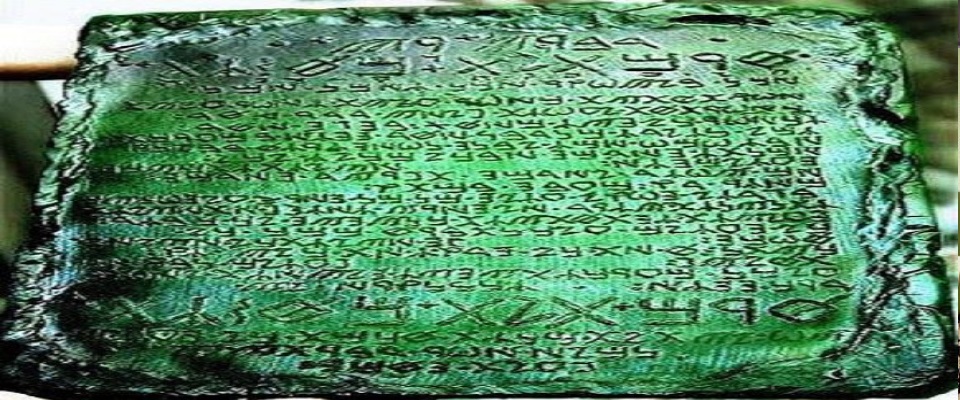
The Emerald Tablets of Thoth, also known as the Smaragdine Table, is a part of an ancient wisdom text known as the Hermetica. It is believed that these tablets reveal the secret of materia prima, the material that is needed to create a philosopher’s stone. According to legend, this stone has the power to extend a person’s life, and can also turn metal into gold.
According to the text, the Emerald Tablet was written by Hermes Trismegistus. However, most people believe that Trismegistus was not a real person. Instead, people see him as a combination of two different gods: the Greek god Hermes, and Thoth, an Egyptian god.
It is believed that the text in this tablet was written sometime between the sixth and eighth centuries. The exact time that the text was written is unknown. Its oldest known appearance is in a book known as The Secret of Creation and the Art of Nature.
There are a number of different translations of the tablet. In fact, one of the known translations was done by Isaac Newton. Newton had a keen interest in alchemy, and kept a number of papers related to alchemy in his home.
In the text, Hermes Tristmegistus states that he has three parts of the philosophy and wisdom of the entire universe. He also talks about the ways in which a person can gain the glory of the entire the world. The text itself is fairly brief, but many believe that there is more to these words than meets the eye.
The tablets have received a lot of attention from people around the world. People who studied alchemy during the Renaissance and medieval made the tablet the backbone of their study. Others that have studied the Emerald Tablets include Aleister Crowley, Roger Bacon, and Albertus Magnus.
A number of people have written about the Tablets of Thoth and what they might mean. Ortolanus, fourteenth century, wrote an exegesis on the Emerald Tablets and The Secret of Hermes. His writings helped to shape the practice of alchemy in the western world.
Different people have taken different approaches when studying and interpreting the tablet. For example, Johannes Trithemius, a German Benedictine abbot, took a fairly literal approach to the tablet. Many others took a laboratory approach to the text.
Today, the Emerald Tablet is one of the few pieces of Hermetica to gain widespread attention in the west. It has remained very popular over the centuries; new people become interested in the tablet every day.
The Emerald Tablets of Thoth are uniquely appealing. The translated text is widely available, and is short enough to be read in a single sitting. However, the true meaning of the tablets are still shrouded in mystery to this day.
Anyone with an interest in alchemy or ancient texts should read over the various translations of the Emerald Tablet. From there, they should try to come up with their own interpretation of the text. No matter which theory a person ascribes to, reading the tablets can be very rewarding.
